Beautiful plants in the room are the result of attention to the needs of green pets. Knowing how to care for dracaena, you can extend the life of the flower up to 10 years. Plants from this group resemble a palm tree in shape, and one of the species was called “Happy Bamboo” for its resemblance to the Chinese symbol of well-being.
Material Content:
Home Care for Dracaena

The rosette of long green or striped leaves at the top is the main decoration of plants of the genus Dracaena. Also noticeable feature are the transverse stripes on the stem.
Ground and pot requirements
In order for the plant to please its well-groomed appearance for a long time, it must initially create good conditions. The substrate should be neutral (pH about 6). You can check the acidity of existing soil using indicator strips or buy soil with a specified pH value. A substrate is prepared for planting from three parts of ordinary garden soil, two parts of peat, one part of sand. Or use a mixture of peat, humus and sand (2: 1: 1).
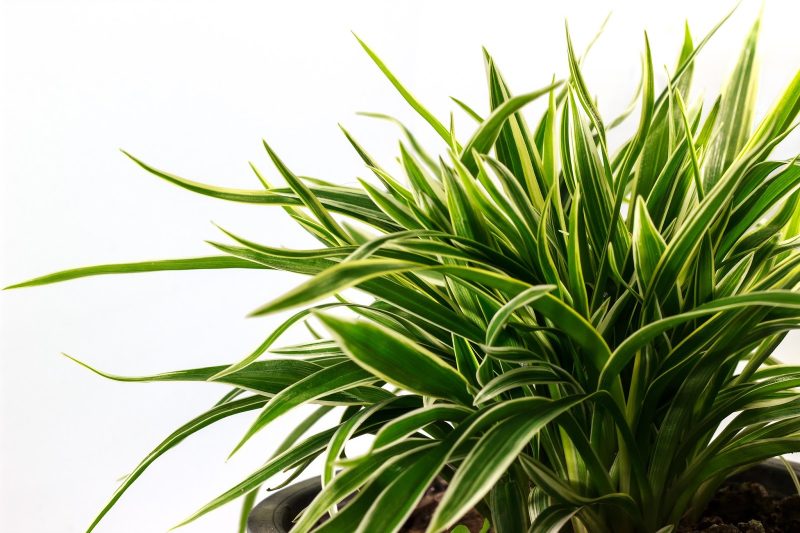
The pot or container must be stable. The height of the container for planting dracaena with a height of 50–80 cm is 25 cm, the diameter is 20 cm. A drainage layer at the bottom of the pot is required, because the roots require good ventilation.
Temperature, humidity and lighting
Dracaena is a thermophilic plant. The temperature in the room in the summer should be in the range of 19–25 ° С. If the room is cold, then dracaena does not grow and can die.Dry air is also harmful, it is necessary to create humidity above 50%.
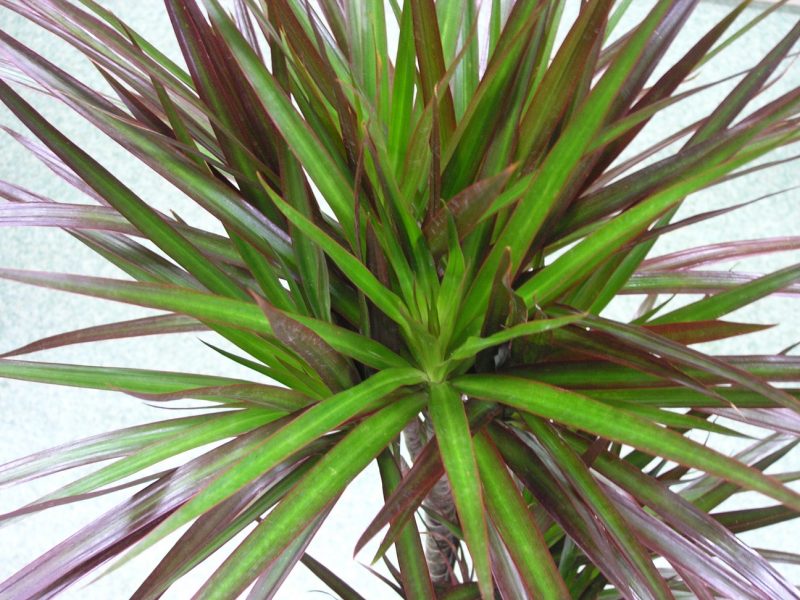
Important! Dracaena, as a rule, develop well in partial shade, but grow more slowly under such conditions. There are some differences in the light requirements for varieties with green and variegated leaves.
If the flower pot is placed far from the window or lamp, then the tops of the dracaena bend. Variegated forms require more light, windows of eastern and western orientation are needed. The plant on the south window needs to be protected from direct sunlight at noon.
Watering a plant

In summer, dracaena should be watered every other day. Do not allow the soil in the flowerpot or tub to dry out completely.
What hydration is required dracene:
- regular watering without stagnation of water in the pan;
- frequent spraying with soft settling water;
- constantly moist, but not wet soil.
Proper care of dracaena at home provides for daily spraying of leaves in the summer. Often dust remains even after regular washes. Then you have to wipe the leaves with a soft damp cloth or a cotton pad.
Fertilizer and fertilizer
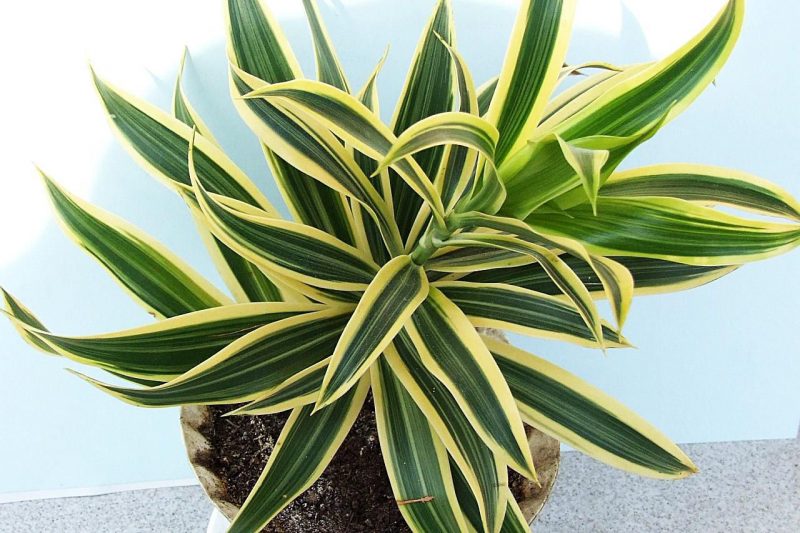
It is recommended to feed the dracaena in the summer once every two weeks. It is advisable to alternate mineral and organic fertilizers, dissolve and add to water for irrigation. Dracenes are sensitive to the content of fluorine and chlorine, so fertilizers must be chosen without these elements. Also, do not use chlorinated or fluorinated water for irrigation.
Transfer
This is a very important procedure, on the successful implementation of which depends on the decorative look of an adult dracaena. It is necessary to very carefully remove the plant with a root lump from an old pot. A suitable drainage material (ceramic shards, gravel, expanded clay or pieces of polystyrene) should be laid at the bottom of a new, higher capacity.
How to transplant and transship dracaena:
- A layer of washed sand and part of the prepared soil are poured on top of the drainage.
- Establish a root lump and add soil on the sides.
- Water the earth in a pot.
- Add the substrate, leaving 1.5 cm to the top edge.
- They compact the soil, sprinkle a thin layer of peat on top.
Dracaena is transplanted annually until the age of three. In the future, the procedure can be performed less frequently, and once a year only change the top layer in the pot to fresh soil.
Winter care
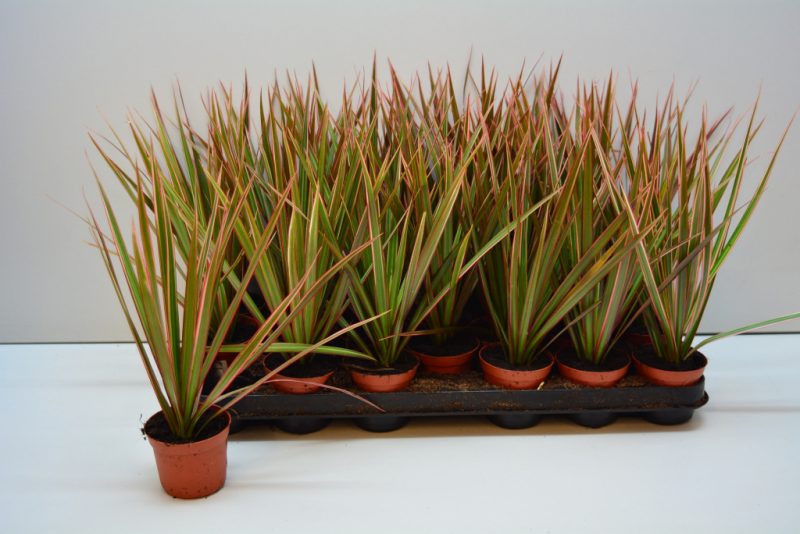
Requirements dracaena conditions in winter in a warm room are almost the same as in summer. However, a room with a temperature of 15 ° C is more suitable. At the same time, the amount of watering and spraying is reduced to once a week. If the room is warm and dry, then dracaena is watered twice a week. In autumn and winter, the plant does not need top dressing.
Dracaena propagation
If several branches depart from the central stem, then one shoot can be used as a material for cuttings. The top is separated by a length of 12 cm, the rest of the stem is cut into sections 7 cm long. A section on the mother plant is sprinkled with crushed charcoal or ash. In this place, under favorable conditions, new shoots appear.
Cuttings are rooted in a pot of wet sand or in a glass of water. Leaves on the cut top must be shortened, leaving 5–7 cm. The temperature in the room should not be lower than 20–22 ° С. Top cuttings are covered with a plastic bag, which is removed daily for ventilation and spraying the substrate. Rooting occurs within 3-4 weeks. After 1-2 months, several shoots grow, which can be divided and planted in different pots.
Seed propagation is mainly used by specialists. If you can get the seeds, then first they are soaked in warm water. After 5 days, they are sown in moist soil in mini-greenhouses or plastic boxes with a transparent cover. Dracaena seeds germinate for a long time.
The main problems when growing
Leaves of dracaena often turn yellow and die in a dry room. The reason may be drafts and cold air.Yellowing and loss of 1 or 2 leaves per month is a normal process. The cause of yellow and brown spots may be fluoride in water or in fertilizers.
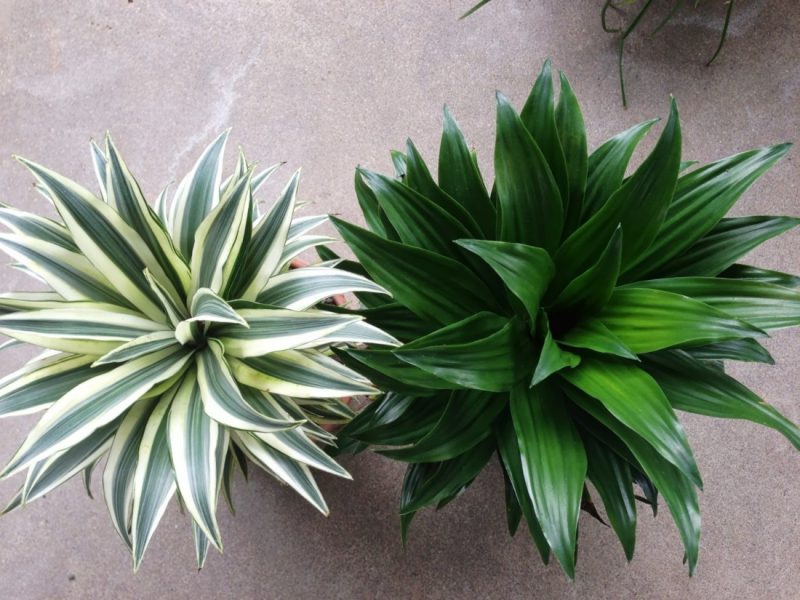
Recommendation. The diseased plant is removed from the pot, damaged leaves, rotten roots are removed. Then the dracaena is transplanted, moderately watered and regularly sprayed with water.
Direct sunlight leaves light burn spots on the leaves. It is necessary to find the plant another place where the dracaena will be better protected from ultraviolet radiation. Brown spots at the ends and along the edge of the leaf blades can occur with insufficient watering. Constant humidity of the earthen coma should be maintained. Excessive watering is also bad. If the abundance of moisture is combined with low temperature, then dracaena dies.
Pests, diseases and methods of dealing with them
Natural species of the genus Dracaena rarely get sick, little attacked by pests. Modern forms and varieties are more susceptible to infections. Fungal diseases cause decay of the roots and base of the stem, yellowing of the leaves. Fusariosis leads to the formation of red and black spots. They cultivate the soil under dracaena with a solution of wood ash, the whole plant is sprayed with biofungicide.
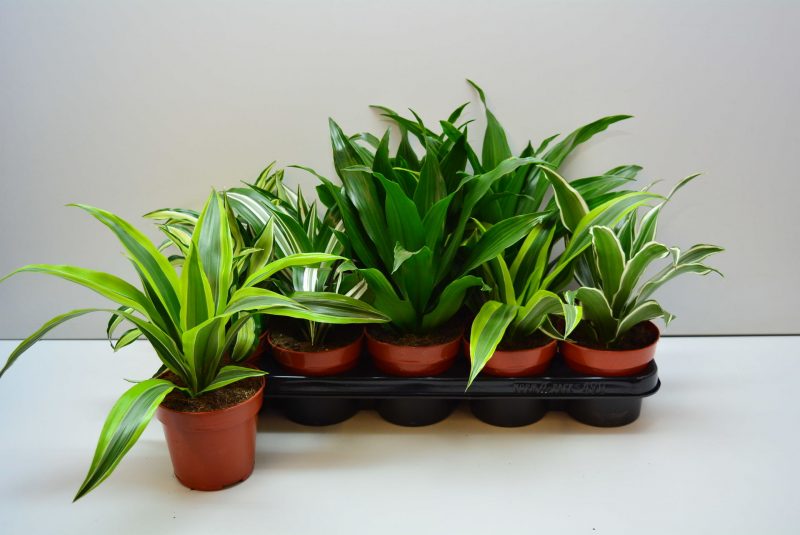
White threads at the base of the leaves on the stem are a sign of a spider mite attack. The plant is wiped with a sponge dipped in a solution of laundry soap, then washed under a warm shower. When infected with a mealybug, scab, they first wash the dracaena with a soap solution, then spray them with an insecticidal preparation with pyrethrin for indoor flowers.
Types and varieties of plants and the nuances of caring for them
Dracaena is appreciated for the exotic look, the beauty of the leaves. Each kind, grade can enliven the room, office and other rooms.
Dracaena Marginata (edged)
An elegant plant with a rosette of thin leaves on the top of a woody stem from 50 cm to 3 m high. Dracaena Marginata with an openwork crown retains decorativeness for a long time due to good care. With sufficient lighting, the red ones, in some varieties also have white stripes along the edge of the leaves, look more expressive.
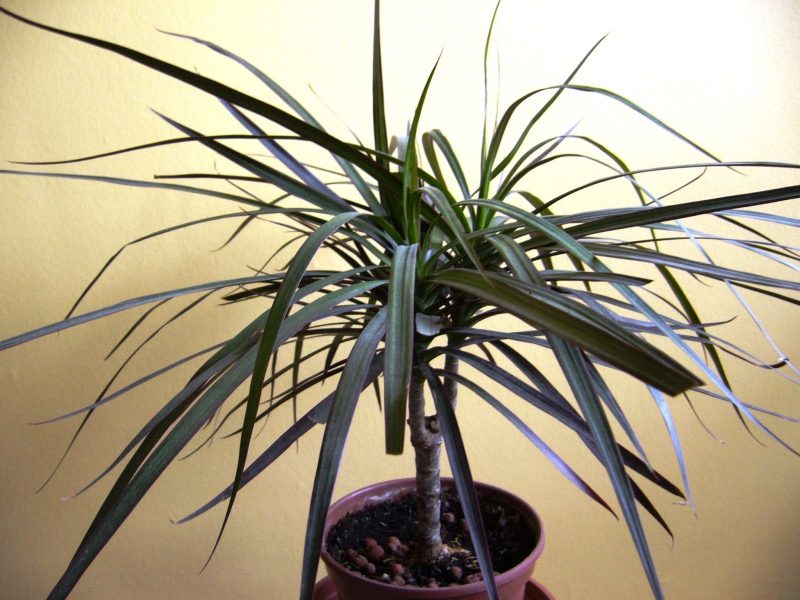
The Colorama variety has a crimson hue, Tricolor attracts with its combination of green, red and yellow, Magenta has a raspberry border. Dracaena bordered cultivar “Bicolor” is distinguished by a combination of pink and green stripes. Variegated leaf shapes need good lighting and frequent spraying with water.
Sander
Thin shoots of this species grow rapidly, easily bend at a young age. Florists use this property to obtain the famous "Bamboo of Happiness." Dracaena Sander, even in a twisted form, is well rooted. Light green lanceolate leaves grow up to 20 cm long.

Spiral curved, connected in bundles of 3, 5, 7 or more, cuttings of Sander dracaena are symbols of prosperity, wealth and prosperity. Young stems are intertwined when they are still well bent. "Bamboo of happiness" needs diffused lighting, can grow without soil in a nutrient solution.
Fragrant (Fragrance)
Fast-growing look with glossy lanceolate leaves. The stalk is straight, thickened, or very shortened. There are varieties with pure green, as well as with two and three-color leaves. Paniculate inflorescences consist of small pinkish-white corollas.
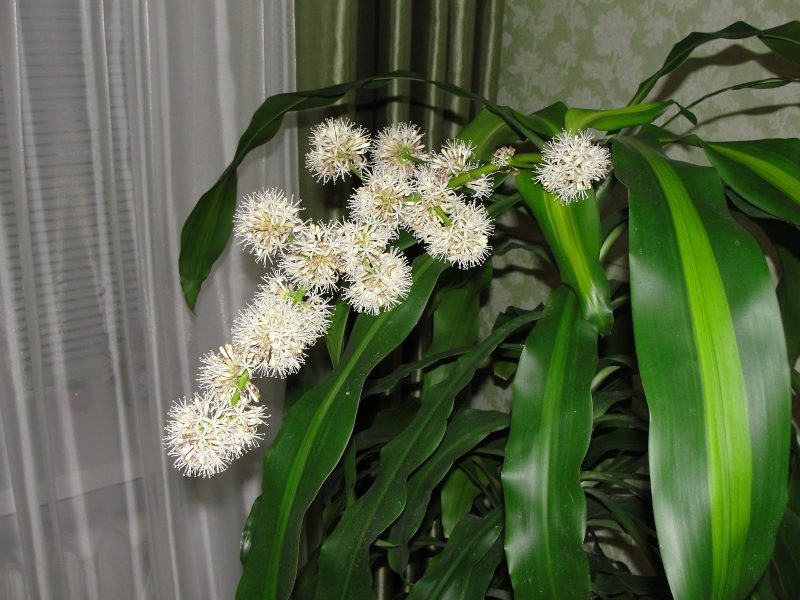
Fragrant dracaena - a little demanding care, can grow with a lack of light. Needs good watering during the period of active growth, does not tolerate too dry air and temperatures below 20 ° C. In winter, moderate watering.
Dracaena deremskaya
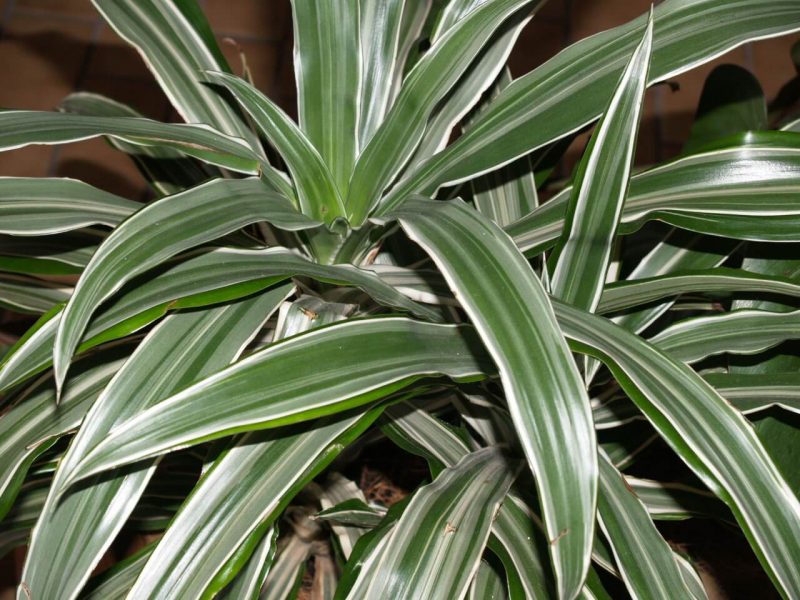
The lignified stalk of an evergreen perennial reaches a height of 0.5–3 m. The lower leaves die off as they age, but they can also be preserved. The edges of the leaf blade are wavy, the color is dark green, as in a natural species, or with longitudinal lines
- yellow, white, light green. It blooms not every year.
Godsef
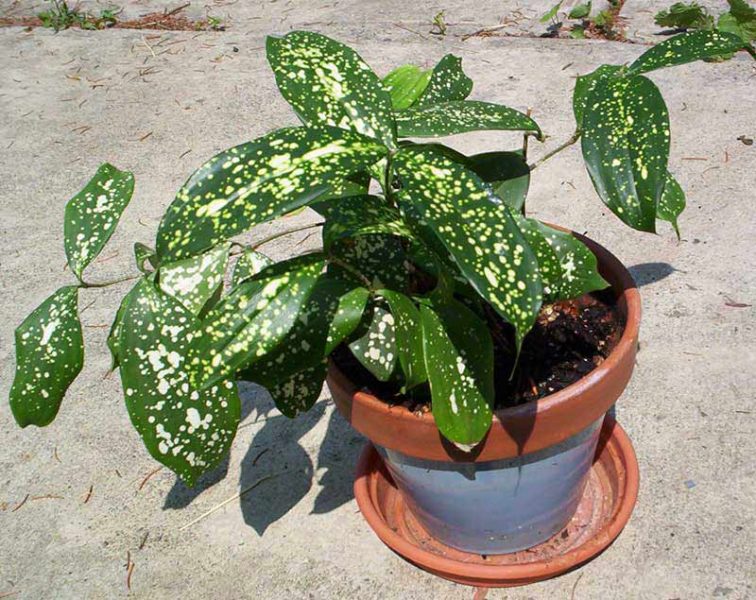
A shrub that looks like a reed. Leaves of oval shape with pointed tops, collected in groups of 3-5 pieces.The green color predominates, there are lighter touches and spots. Pleasantly smelling greenish-yellow inflorescences emerge from the axils of the leaves.
Reflex (Curved)
Green leaves with a yellow border reach a length of 15 cm. The tall stem of the plant needs support. Using cropping, you can give a more compact shape. Reflex is a more demanding form of care compared to related dracaena.
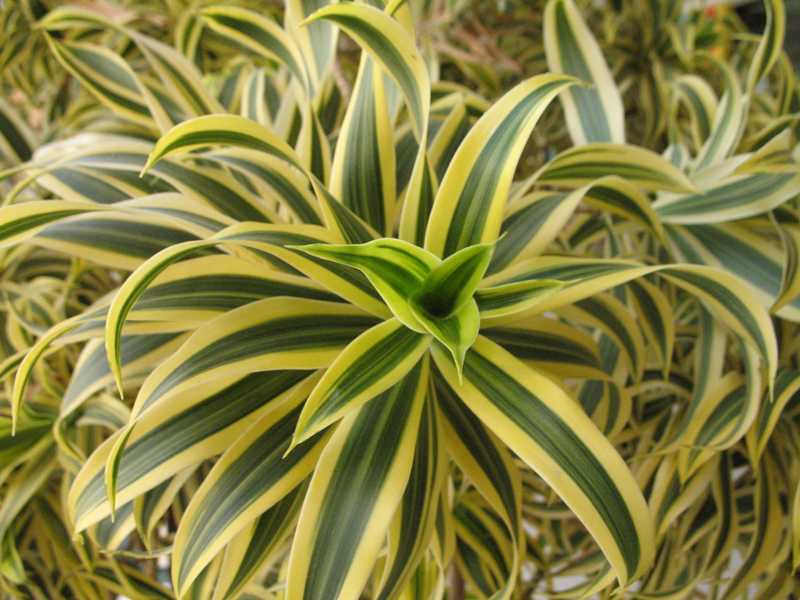
When buying a plant in a flower shop, it is recommended to pay attention to the leaves - the ends should not be dry. Initially, a healthy dracaena with proper care retains its decorative effect for more than 5 years.
At home, you must choose a well-lit place for variegated varieties, protect the plant from direct sunlight. With a lack of natural light, dracaena develops well under artificial lighting. The plant should be washed regularly with warm water to preserve the main decoration - a thick rosette of leaves.
Indoors, dracaena is in harmony with variegated varieties of chlorophytum, dieffenbachia, Veitch pandanus. All these plants need the same lighting and humidification conditions, so it will be easy to look after a decorative group.












